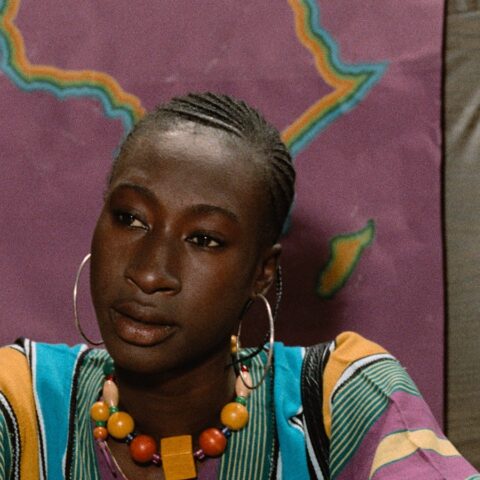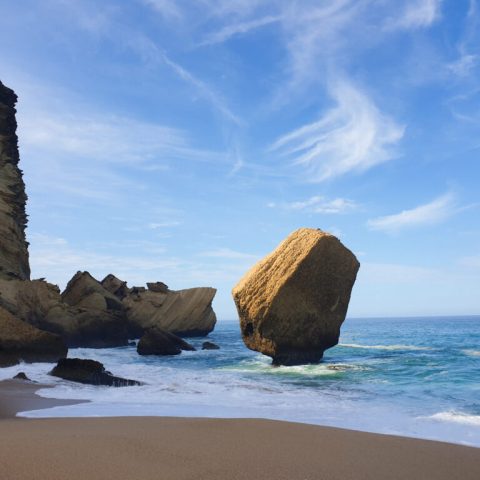THE BAHAMIAN ARCHIPELAGO
By Larry Smith
Wednesday, May 11, 2011.
The Bahamas is like a piece of Swiss cheese, scientists say. Our limestone bedrock is riddled with cracks and fissures, and everything is tidally connected.Ages ago, when sea levels were lower, rainfall eroded the limestone to form extensive underground caverns. These were described on land as early as 1725, by the English naturalist Mark Catesby. The marine caves we call blue holes were first recorded on charts in 1843. But it is only in the past 50 years or so that we have been able to visit the “enchanted voids” of this mysterious interconnected underworld. In fact, experts describe blue holes as a final frontier – the last unknown places on Earth that humans can physically go to explore.And explorers are making unprecedented discoveries in Bahamian blue holes, especially on Abaco, where Dan’s Cave has broken all records for an island cave at well over 30,000 feet in length. It is now the longest cave system in The Bahamas.
At over 10,000 feet in length, nearby Ralph’s Cave is the second longest underwater cave system in The Bahamas. It contains the most intricately decorated passages of any caves on Earth, wet or dry, with massive crystal formations of every shape and description.Recently discovered Nancy’s Cave has produced significant archaeological finds and fossils. This cave currently has 1,400 feet of explored passages and is littered with the bones of ancient crocodiles, tortoises, birds and bats.The unique water chemistry in Sawmill Sink has preserved the earliest Lucayan bones (dated to about a thousand years ago), more than 54 individual crocodile skeletons, 13 extinct tortoises (completely new to science), hundreds of birds (some new to science), bats, snakes, lizards and fish. This material is currently re-writing Bahamian prehistory. Reel Breaker Blue Hole, near the Crossing Rocks community dock and boat ramp, contains more than 5,500 feet of circuitous passages. It and other offshore sites help to fill and drain the large expanse of flats on the west coast known as the marls.These blue holes are part of a nine-mile area of Crown and Treasury land in South Abaco that experts are seeking to protect as a special conservation zone. The area includes at least 17 cave entrances and extends west from the Abaco Highway to an offshore area of mangrove channels and mud flats. All told, these sites open into more than 10.3 miles of underwater passages, with thousands of feet of new passages being discovered every month.A conservation proposal has been developed by the Bahamas Caves Research Foundation, a team of world class explorers, scientists and educators based on Abaco. Over the past year, the Foundation, the Bahamas National Trust, Friends of the Environment, and the Antiquities Corporation have been holding town meetings, conducting surveys and collecting signatures of support. The proposal will be submitted to government within the next few weeks for a decision.According to University of Florida biologist, Dr. David Steadman, quoted in a recent article in Diver Magazine,“If we don’t protect places like this, then the bulldozers will arrive without warning. The damage they will do in a day cannot be reversed in a millennia.”Steadman was part of a scientific expedition sponsored by National Geographic and the Antiquities Corporation in 2009 to document the discoveries. And between the Nova television documentary and the August 2010 National Geographic magazine cover article, more than 40 million people worldwide were exposed to the treasures being found in Bahamian blue holes.”These sites are now recognized by top explorers as the world’s most highly decorated underwater caves, with massive crystal columns over 30 feet in height and diameter,” the conservation proposal says. “Underground rooms the size of baseball fields are found throughout the systems (and) the fresh water lenses of the islands support systems of unique cave-adapted marine life found nowhere else in the world.”Research in these caves has focused on evidence of past climatic conditions; studies on crocodile, tortoise, bird and bat fossils; tracing tidal movements of sea water through the systems; dating dust from the Sahara desert deposited in the Bahamas over hundreds of thousands of years; and cataloguing new species, including bacterial colonies thought to be representative of first life forms on Earth.The Antiquities Corporation has also partnered with the University of Florida at Gainesville’s Florida Natural History Museum to catalogue, preserve and archive the extremely fragile and valuable material that is being brought to light from Sawmill Sink and other caves.Scientists are understandably worried about the impact that large-scale development will have on these fragile ecosystems. The conservation proposal is a preemptive effort to ensure that the land above these sites will never be destroyed or modified. “All cave life, fossil preservation, and archaeological material preservation is directly dependent upon the unique water chemistry of Bahamian blue holes,” the proposal says. “Since the organic surface matter is the building block of the entire biological process, it is of utmost importance that all vegetation found near the entrances to blue holes, as well as vegetation found above the underground passages, be kept in a pristine condition.”While traditional fishing and hunting could continue in the conservation zone, scientists want to keep the pine forest, blue holes, tidal creeks, logging roads and mangrove areas as they currently are, while promoting them to the tourism industry as one of Abaco’s great natural wonders, and encouraging participation by local Bahamian entrepreneurs.Once the protected area is established, a management plan will be created by The Bahamas National Trust in consultation with The Bahamas Caves Research Foundation, the Antiquities Corporation, Friends of the Environment and local stakeholder communities. “In the past, the value of blue holes and associated habitats was not fully known,” the proposal says, “and they have been mistreated through dumping and sewerage contamination. We now have a chance to take a step that is proactive, instead of reactive, in conserving these irreplaceable treasures.”The Bahamas Caves Research Foundation is also compiling a national blue holes database for the Department of Marine Resources, the BEST Commission and the Antiquities Corporation. About 260 sites have been identified so far on 14 islands (Grand Bahama, Abaco, New Providence, Andros, Berry Islands, Exuma Cays, Eleuthera, Long Island, Ragged Islands, Cat Island, Mayaguana, Little Inagua, and Inagua).Diving into the Sargasso SeaThe Bahamian archipelago lies on the edge of the Sargasso Sea. This area has been described as an ocean within an ocean, bounded by a vortex of swirling ocean currents—a place where huge mats of seaweed drift on the high seas and shelter a unique community of open ocean animals.University of Miami marine ecologist Dr Kathleen Sullivan Sealey (a former dean of the College of the Bahamas science division) is currently travelling on a research vessel operated by the California-based Schmidt Ocean Institute to study the animals that live at the surface of the Sargasso Sea, and also those that live on the deep seafloor, thousands of feet below.On February 6 the research vessel left the Canary Islands for Bermuda on the first leg of its cruise, and will cross the Sargasso Sea from north to south, coming to port in the Bahamas later this month. Sullivan Sealey is part of an interdisciplinary team of scientists led by Monterey Bay Aquarium Research Institute ecologist Ken Smith.At six different points within the Sargasso Sea, the scientists are collecting samples of animals and seaweed. They will also use a small robotic submersible to videotape the deeper portions of the floating Sargassum mats and to make water-quality measurements. These observations will help the team determine how many animals exist as part of this unique community.The team’s second objective is to study animals that live on the deep seafloor. At each of the six study sites in the Sargasso Sea, baited cameras will be lowered to the seafloor to record the deep-sea fish and other animals that are attracted to the bait over a 24-hour period.At the most southerly study site, about 500 miles west of Bermuda, the scientists will also set up a long-term observing system 5,400 metres down on the abyssal seafloor. The observatory consists of a time-lapse camera system connected to a string of “sediment traps”. The time-lapse camera will snap pictures of a four-by-five-meter patch of ocean floor every hour for up to six months.Previous studies of abyssal animals in the eastern North Pacific and eastern North Atlantic demonstrated that climate change is affecting sea life at depths previously thought to be insulated from such things. the current research will help scientists to better understand how these effects vary from one part of the ocean to another on a global scale.
Larry Smith writes a column called “Tough Call” every Wednesday for the Bahamas Nassau Tribune. A former reporter and editor, he now operates a communications agency in Nassau (www.bahamasmedia.com). He also blogs at Bahamapundit.
�
Send to a friend | �
View/Hide Comments (0) | �





Thank you ever so for you blog post.Really thank you! Cool.